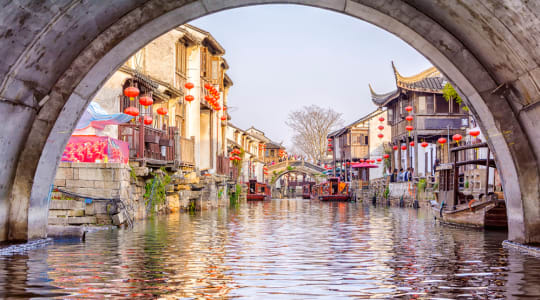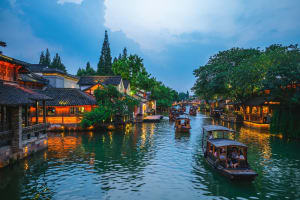
The Suzhou Canals, also known as the Venice of the East, is a network of canals, waterways, and bridges located in the city of Suzhou, in the Jiangsu province of China. The canal system is one of the oldest in the world and has been in use for over 1,200 years. It is considered a UNESCO World Heritage Site and is a popular tourist destination, attracting visitors from all over the world.
The Suzhou Canals were originally built during the Sui dynasty (581-618) and were expanded and improved during the Tang (618-907) and Song (960-1279) dynasties. The canals were built to provide transportation for goods and people, and to irrigate the fields in the surrounding countryside. The canals played an important role in the economic development of the region, and helped to establish Suzhou as an important center for silk production.
Today, the Suzhou Canals are a popular tourist attraction, offering visitors a chance to see the traditional architecture and cultural heritage of Suzhou. The canals are lined with historic buildings, including gardens, temples, and pagodas, many of which date back to the Ming (1368-1644) and Qing (1644-1911) dynasties.
One of the most popular ways to see the Suzhou Canals is by taking a boat tour. Visitors can choose from a variety of tour options, including private tours, group tours, and evening tours. During the tour, visitors can see the traditional architecture, lush gardens, and historic temples that line the canals.
In addition to boat tours, visitors can also explore the Suzhou Canals on foot or by bike. Many of the streets and alleys that run parallel to the canals are pedestrian-only, making them ideal for walking or cycling. Visitors can also explore the various historic buildings and cultural sites that are located along the canals, including the Master of the Nets Garden, the Humble Administrator's Garden, and the Tiger Hill Pagoda.
Explore Near Suzhou Canals
Discover 4 attractions, 5 cities, and 2 airports within 75km. Perfect for planning day trips, finding connecting flights, or discovering new destinations to explore during your visit.
Nearby Attractions & Places to Visit
4 destinations within 16.2km - 71.2km from your location




Nearby Cities Worth Exploring
5 destinations within 2.3km - 40.2km from your location
Airports Near Suzhou Canals
2 destinations within 28.2km - 68.9km from your location
Cross-Border Adventures Near Suzhou Canals
Discover cross-border adventures near Suzhou Canals. Explore neighboring countries with similar attractions and extend your travel experience across borders.








And 8 more neighboring countries